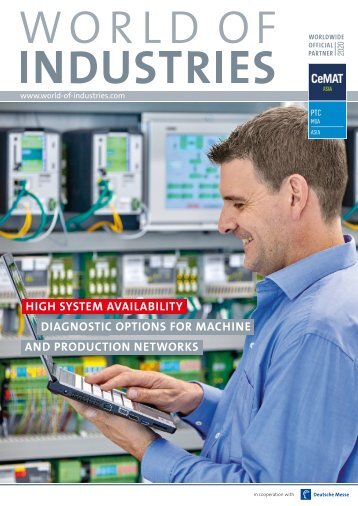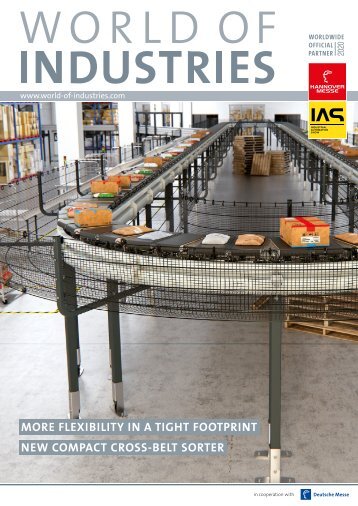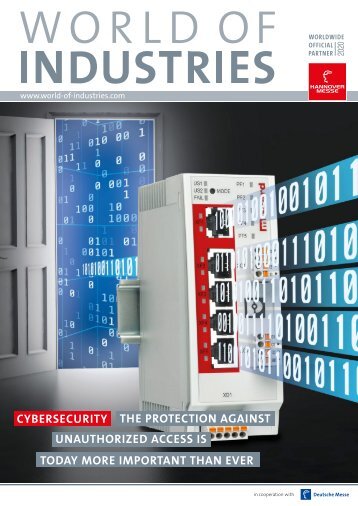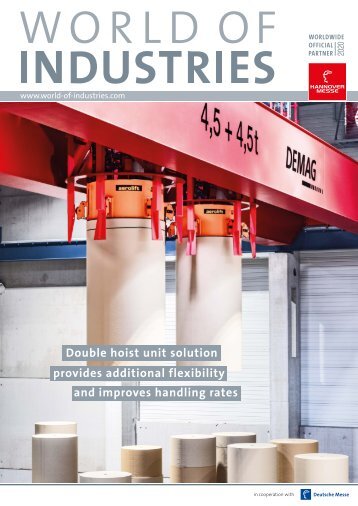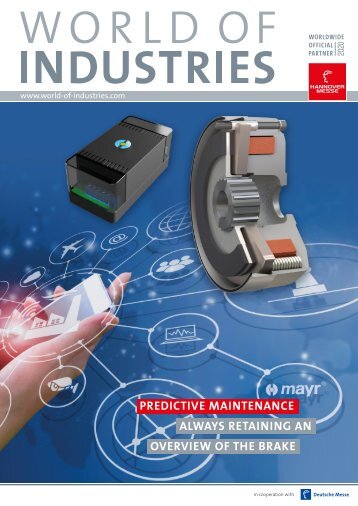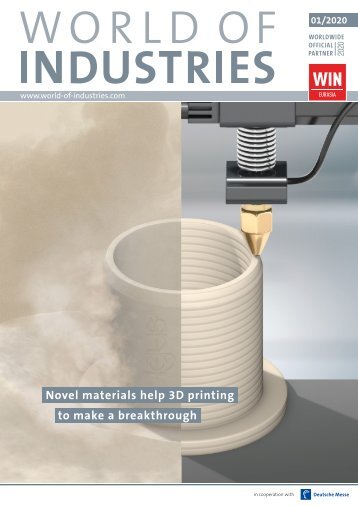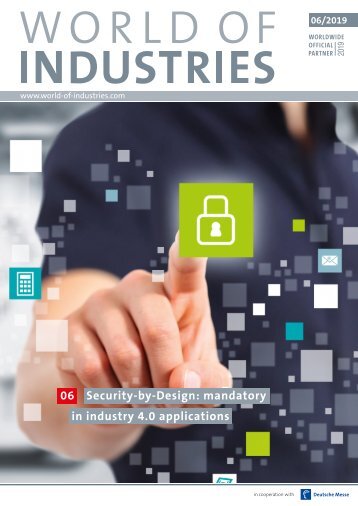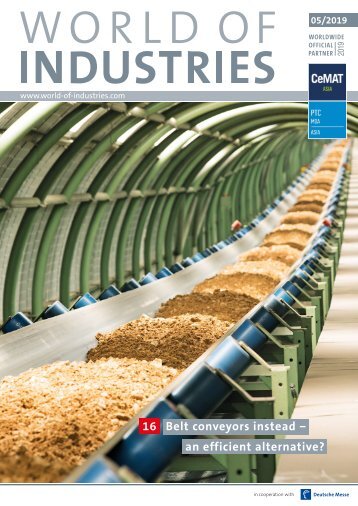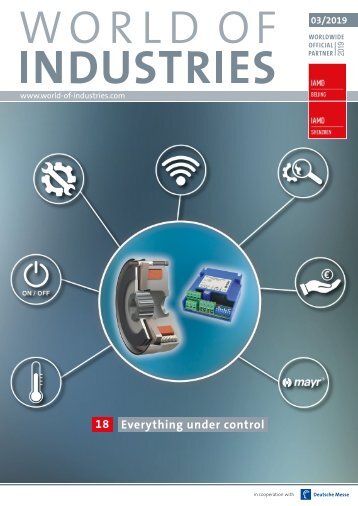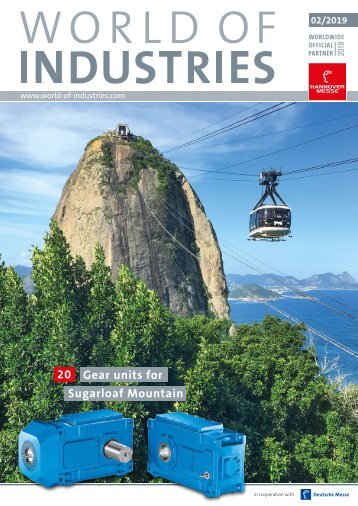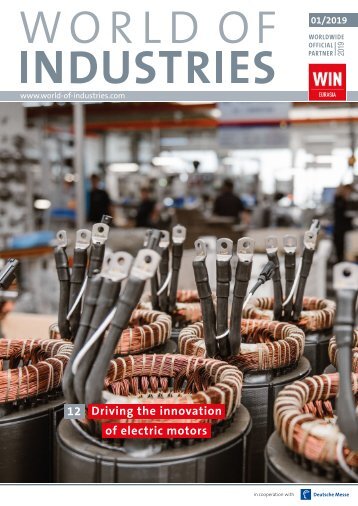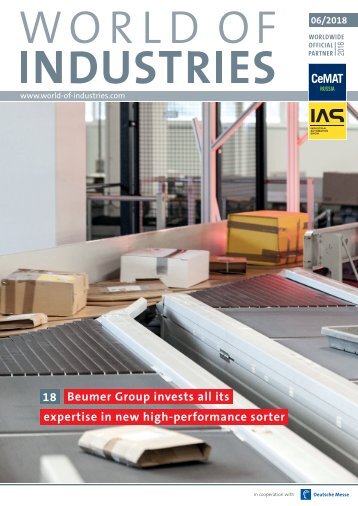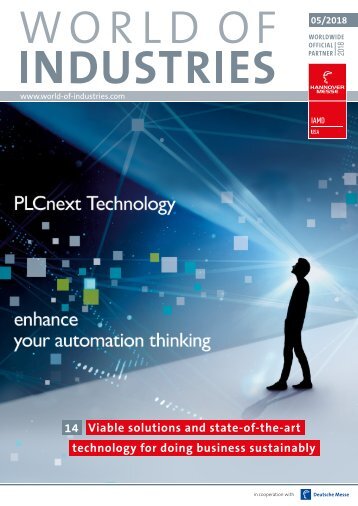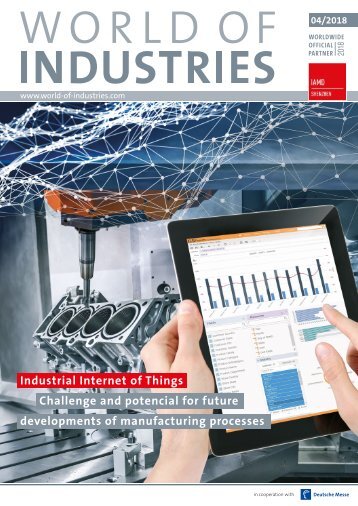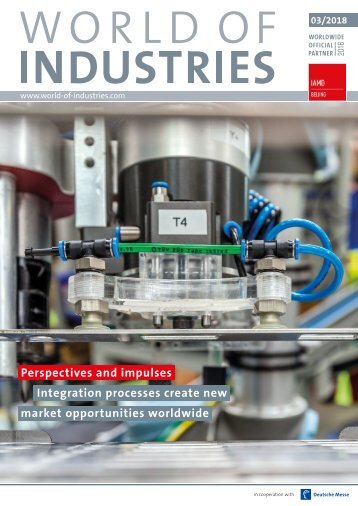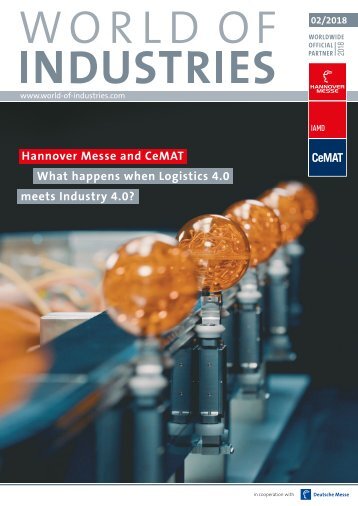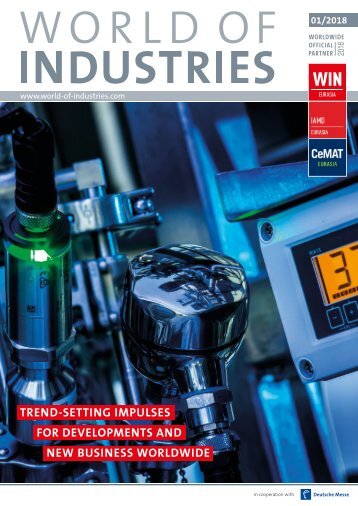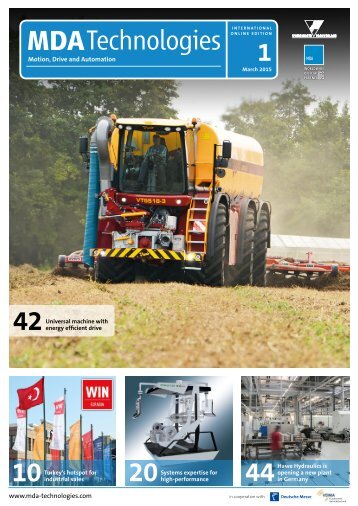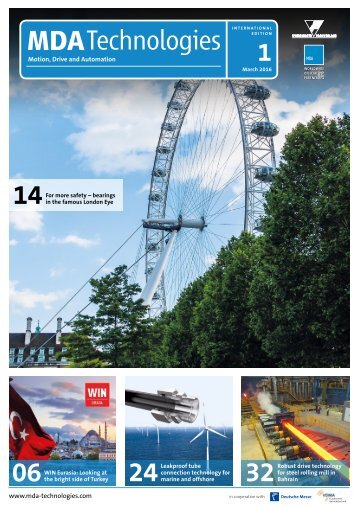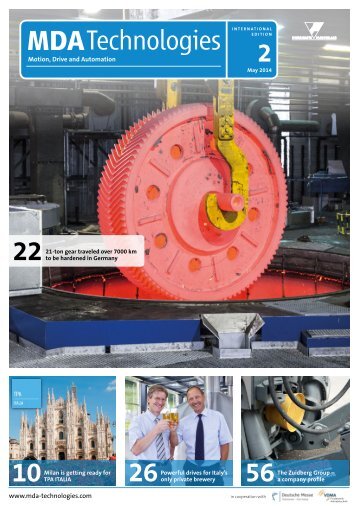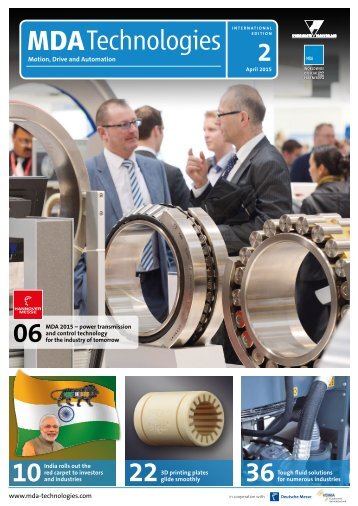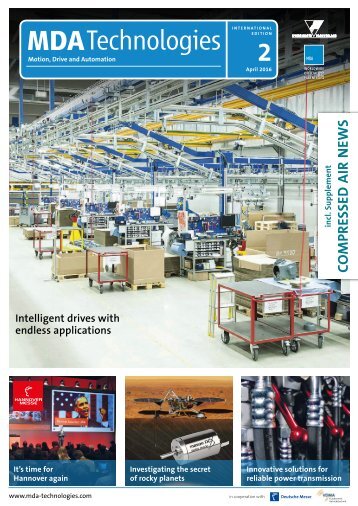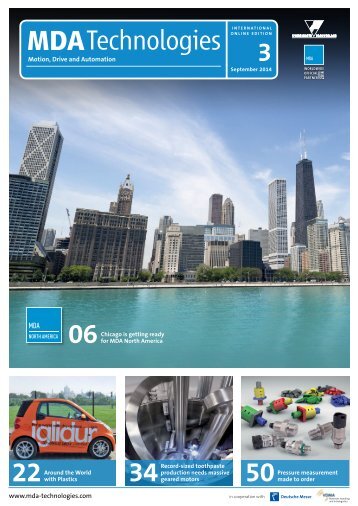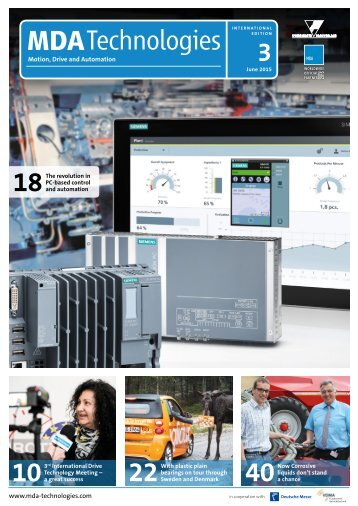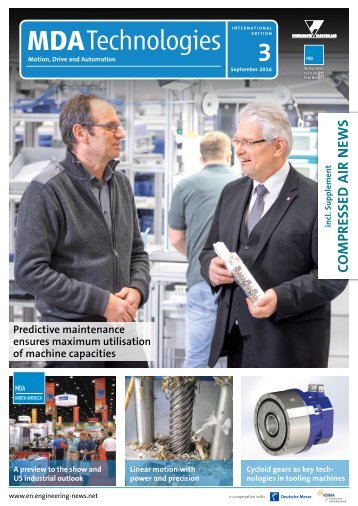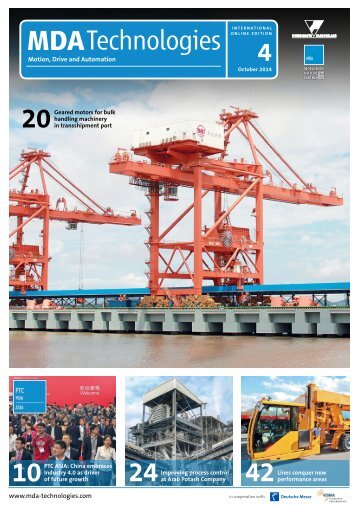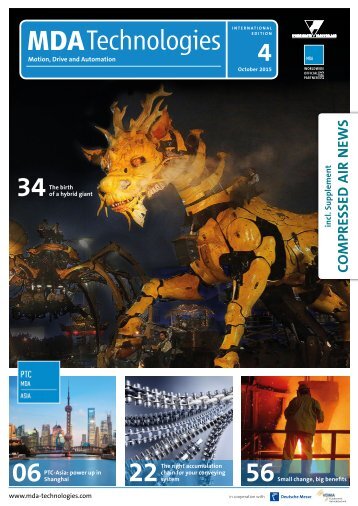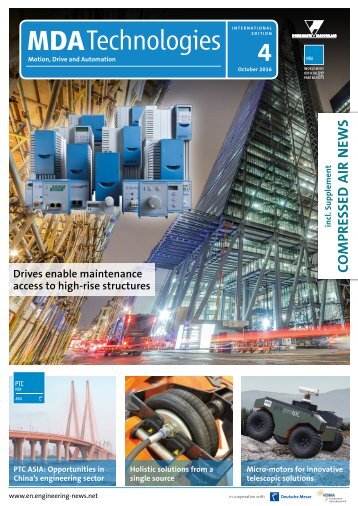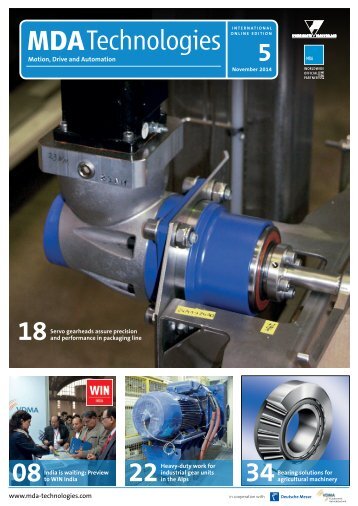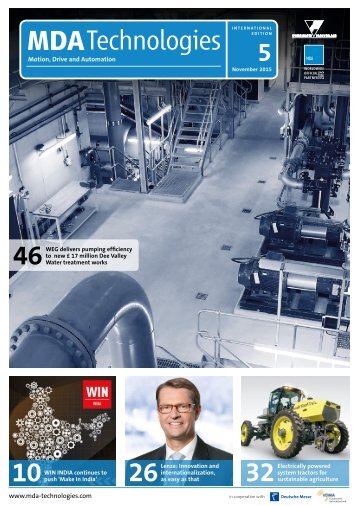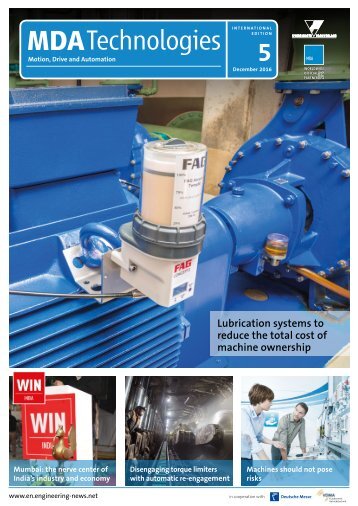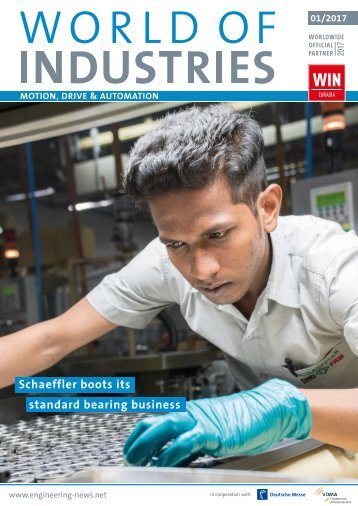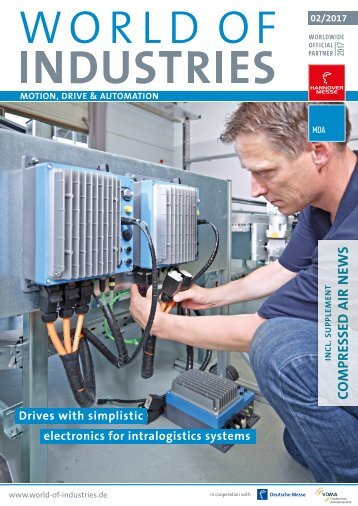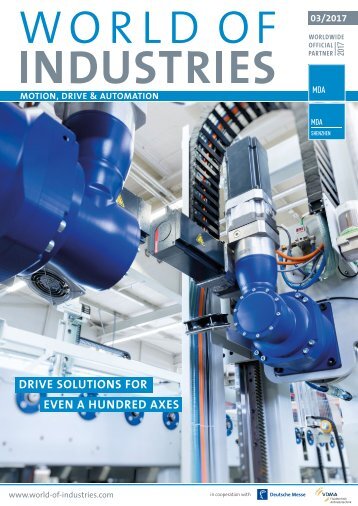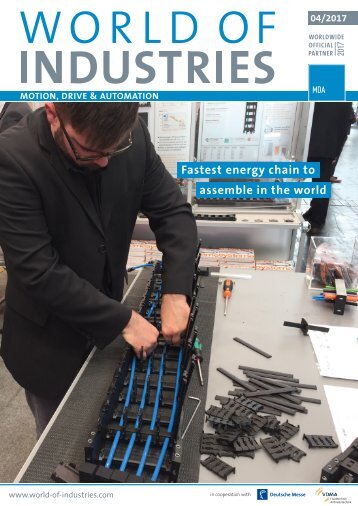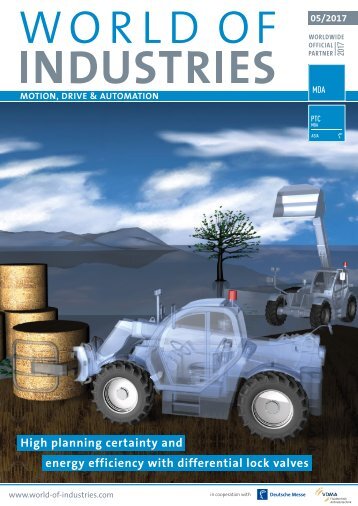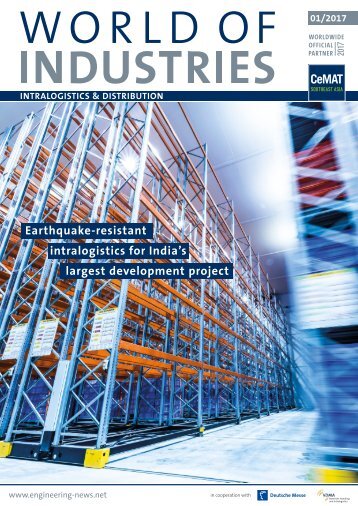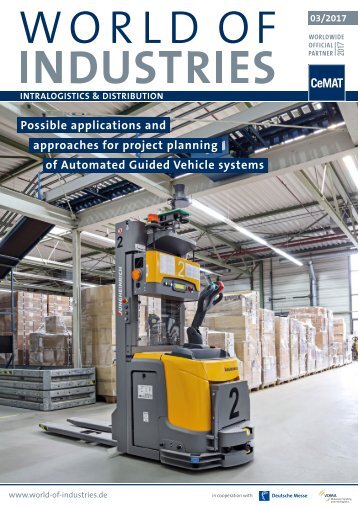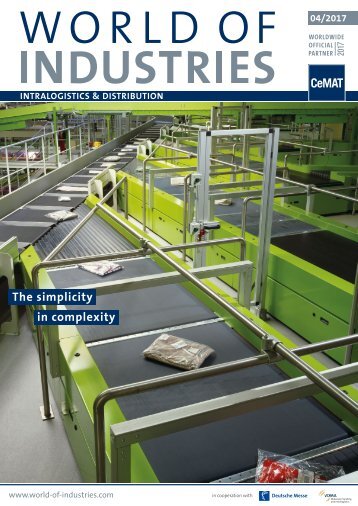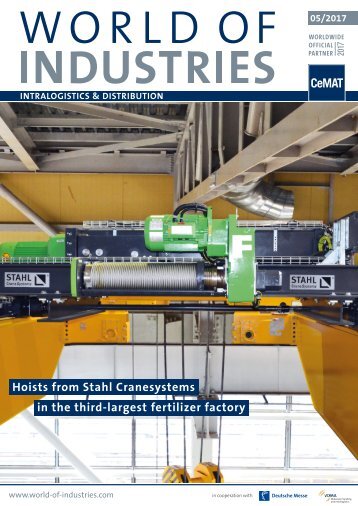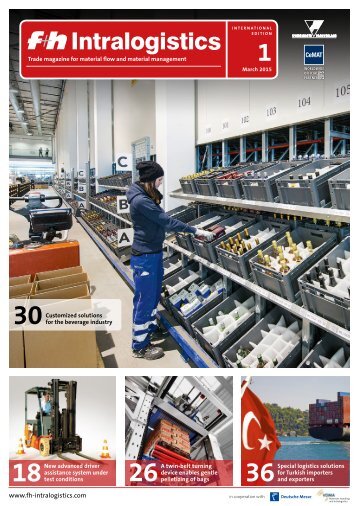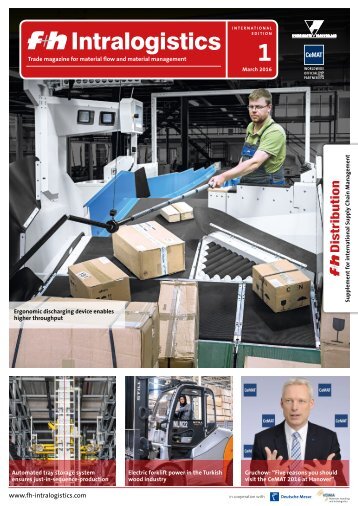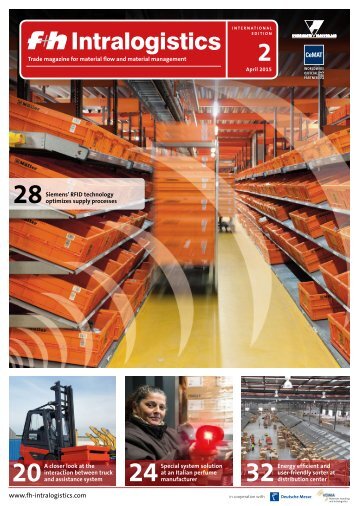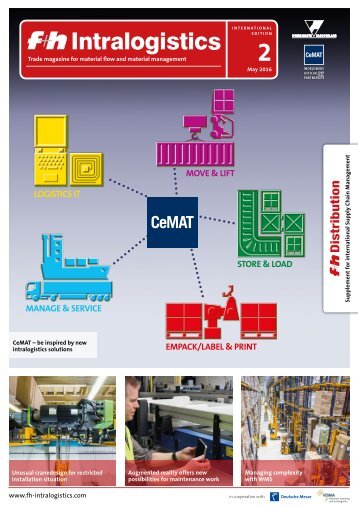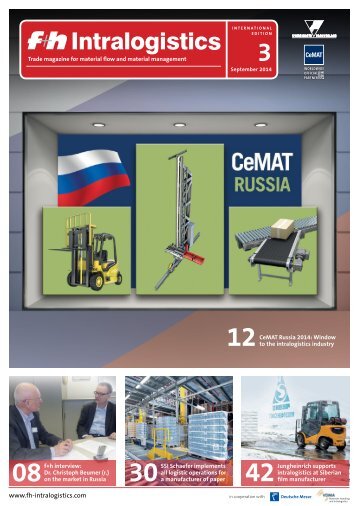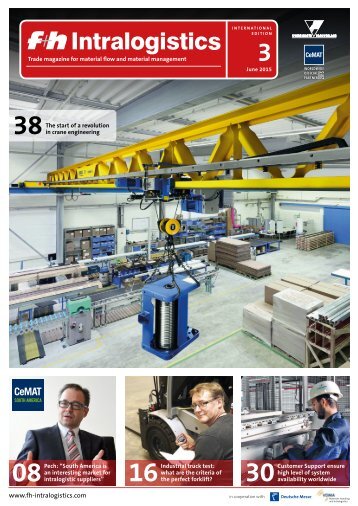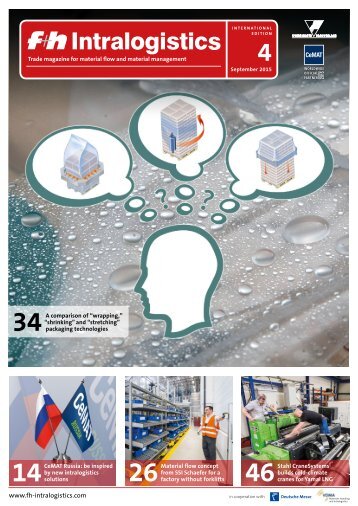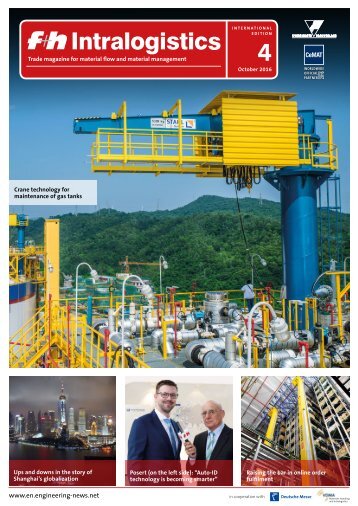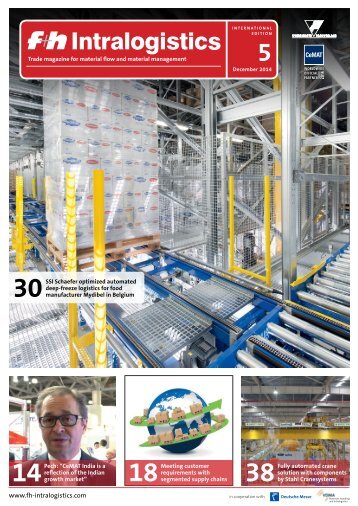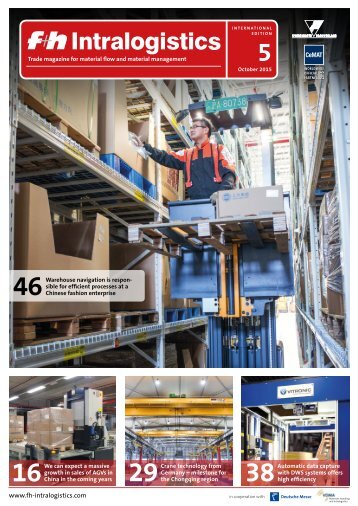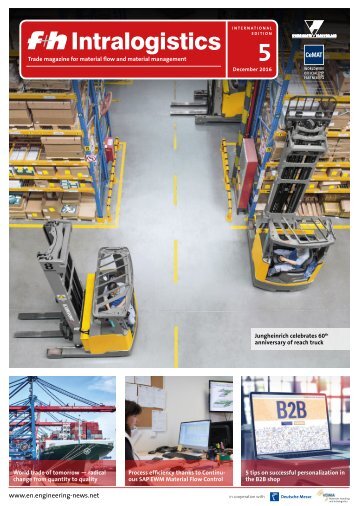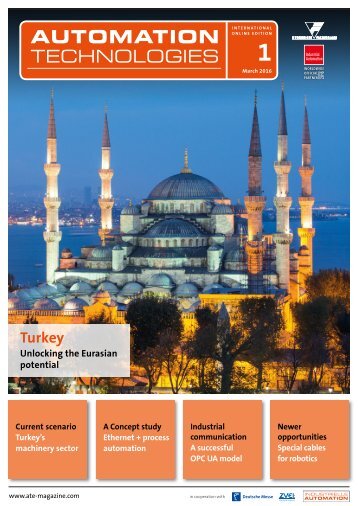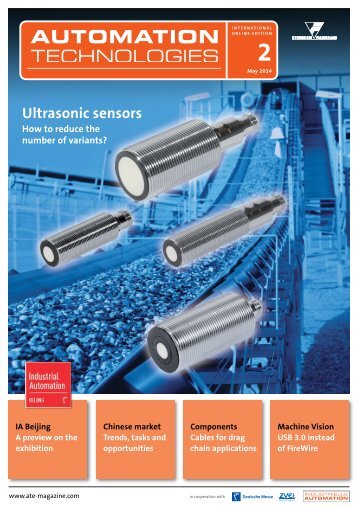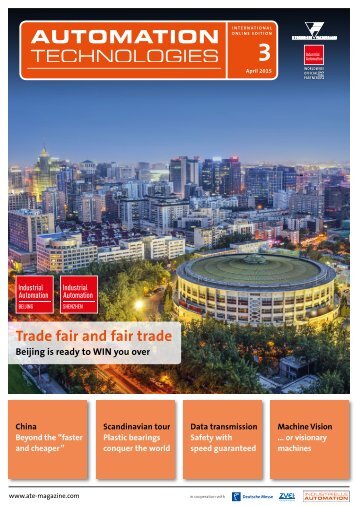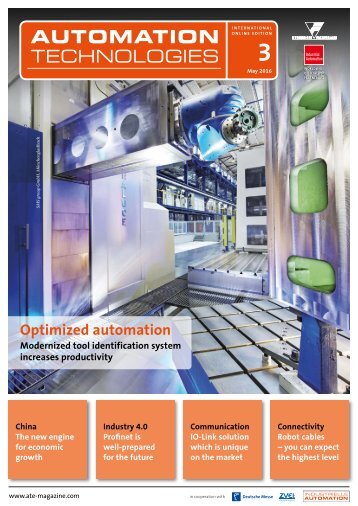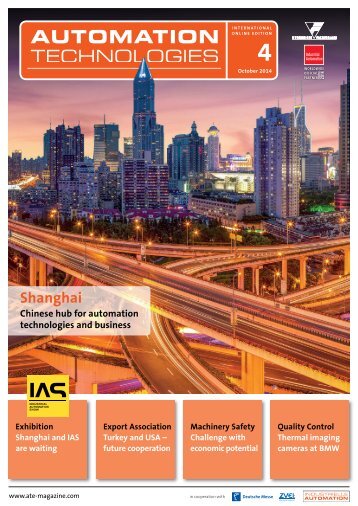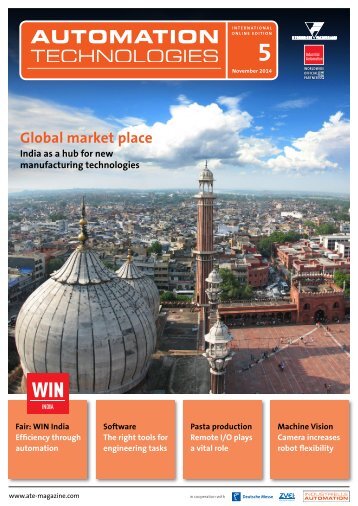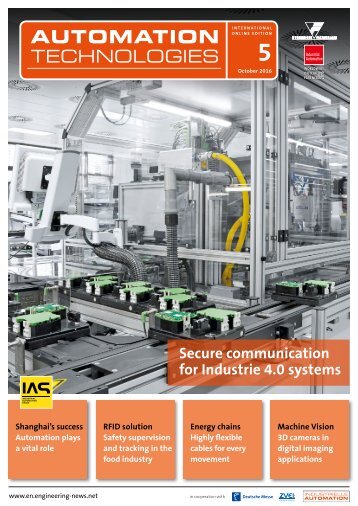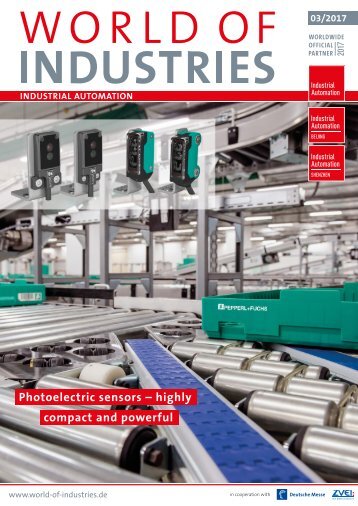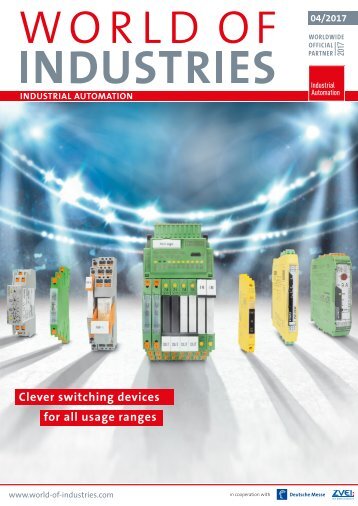WORLD OF INDUSTRIES 04/2018
- Text
- Industries
Industry 4.0 - how
Industry 4.0 - how industry can undergo continuous development A comment by Hartmut Pütz, President Factory Automation EMEA at Mitsubishi Electric Europe. AUTOMATION We are all on a journey towards Industry 4.0. The manufacturing industry is currently undergoing a period of rapid change, moving from automated production to fully digitized manufacturing. With Industry 4.0, our generation is, for the first time, actively involved in an industrial revolution. This puts us in the unique position of being able to consciously steer our course toward the future. The way things will develop depends largely on the requirements of end users, which have changed massively in recent years. They increasingly expect more product variety and customisation, but at a similar price point. With the rise of online ordering, the direct link from a sale to a machine tool or a robot altering its work pattern is closer than ever. To satisfy this demand suppliers require the highest levels of flexibility from their manufacturers throughout the supply chain. They have to react very quickly, changing production numbers for individual items on the fly. This is where the ‘smart factory’ starts to come into being. Creating a smart factory As an automation solutions provider, Mitsubishi Electric is a partner to the industry. We support our customers in the development of their business ventures with consultation on industrial automation and information technology. All our activities relating to creating the ‘smart factory’ are part of our ‘e-F@ctory ’ concept. This encompasses the e-F@ctory Alliance, a worldwide active network of cooperating technology companies. The network brings together manufacturers of industrial components as well as specialist system integrators and software providers. These partner companies collaborate at an individual level to offer flexible solutions. A great example of the e-F@ctory Alliance working toward delivering proven solutions to Industry 4.0 challenges can be found at Mitsubishi HiTec Paper Europe GmbH in Bielefeld, Germany. There, a holistic approach to predictive maintenance has been achieved by implementing a Smart Condition Monitoring solution developed in cooperation with e-F@ctory Alliance partner FAG Schaeffler. The system enables intelligent maintenance decisions to be made in advance, based on real need, not simply routine. It dras tically reduced unplanned downtime and operating costs, while optimising asset lifecycle management. Why companies’ IT infrastructure needs to change When talking about Industry 4.0, the Internet of Things (IoT) is always involved. Recent estimates put the number of devices that are currently connected through the IoT at about 5 billion, and this is likely to soar over the next few years. Combine that prediction with the amount of data that is being generated and processed by a more connected factory, and it is easy to see why companies’ IT infrastructure needs to change. We can appreciate, then, the attraction of cloud based data storage and processing services for businesses. Processing the data means deriving trend information and presenting users with customised dashboards. The intelligence gained can be used to improve overall plant performance and asset management. Expertise network available The results include widely distributed intelligence, with remote devices generating lots of information. Those are linked over standard open protocols that can be seen as the key to forming a digital nervous system within businesses. The networked digital data is then combined into bidirectional systems to integrate data, people, processes and systems for better decision making. We are also contributing directly to the developments of innovative international organisations such as the German Government committee “Plattform Industrie 4.0”, the Industrial Internet Consortium (IIC) in the USA and the Robot Revolution Initiative (RRI) in Japan. These activities, in combination with the technology that we already have available and our global expertise among a wide range of industry sectors, underline that we are well prepared to support our customer on their individual journey towards the future of a digitized world. Photographs: background fotolia, portrait Mitsubishi Electric Europe B.V. https://eu3a.mitsubishielectric.com 18 WORLD OF INDUSTRIES 4/2018
Logic signal distribution by M8x1 I/O-junctions Turck cloud solutions uses preconfigured data evaluation for industrial tasks With Turck Cloud Solutions service is transferred directly from Turck’s controller and I/O components to the cloud. For this, Turck is using the Kolibri protocol recently purchased from Beck IPC, which guarantees encrypted communication to the cloud. Users can thus save and evaluate production data in the Turck cloud – either just for monitoring tasks or for optimizing their processes and plants. The benefit compared to other systems is the fact that the relevant data can be simply selected in the controller at the click of a mouse. The cloud user interface can then arrange this data directly in clusters and logically organize it in diagrams and charts without any additional configuration. Customers can select whether to have their data hosted cost efficiently and centrally by Turck, or select an on-premises variant, in which the Turck Cloud Software is installed on the customer’s own servers. The centrally hosted variant can also be registered by the user as a customer cloud. In this way, the cloud user interface can be adapted to the customer’s branding and corporate design. This variant is particularly attractive for OEMs wishing to offer their customers a cloud service as an option with their machines and plants. www.turck.com The connectivity specialist Escha showed new M 8x1 I/O-junctions with active logic-function. These are especially adapted for applications with limited space conditions like grippers, robots or compact handling units. The extremely compact devices are placing intelligence close to sensors and transmit preprocessed signals to a central control unit. The individual ports are thereby linked by means of various fixed combinations of AND- and OR-logic. In order to facilitate a safe and reliable connection between conventional passive I/O-junctions and control units, multi-pole cables are needed. In case of fieldbus junctions, shielded cables are even required. In contrast, I/O-junctions with active logic-function provide the advantage of defaulting to a common-, unshielded 4- or 5-pole sensor cable that can also be installed much more flexibly than a comparable rigidly shielded cable. In this way, wiring costs as well as wiring time are reduced and errors are averted. Escha offers the M 8x1 I/O-junctions with active logic-function in 4-, 8-, and 10-way versions with various fixed combinations of AND- and OR-logic. www.escha.net 27.08.-31.08.2018 03.09.-07.09.2018 Vehicle Acoustics (NVH) Learn about the design of vibration and acoustic behavior of vehicles. Life Cycle Assessment (LCA) Analysis of material and energy streams of products during their life cycle PRACTICAL RELEVANCE German Engineering Certificate Courses – Book Now: www.further-education-in-engineering.com
- Page 1 and 2: 04/2018 www.world-of-industries.com
- Page 3 and 4: EDITORIAL Don’t miss internationa
- Page 5 and 6: 22 26 MOTION AND DRIVES 22 SAFETY C
- Page 7 and 8: Beumer Group brings on board Amir R
- Page 9 and 10: is the minimum average it needs in
- Page 11 and 12: the United States, Japan, Switzerla
- Page 13 and 14: 02 Vibration analysis offers insigh
- Page 15 and 16: 01 01 To ensure exceptionally high
- Page 17: 01 Industrial robots are ideal for
- Page 21 and 22: Comprehensive diagnostics using the
- Page 23 and 24: With the highest outdoor elevator i
- Page 25 and 26: Sinamics V-converters with new fram
- Page 27 and 28: 01 In June 2017 the hoists and comp
Inappropriate
Loading...
Mail this publication
Loading...
Embed
Loading...

